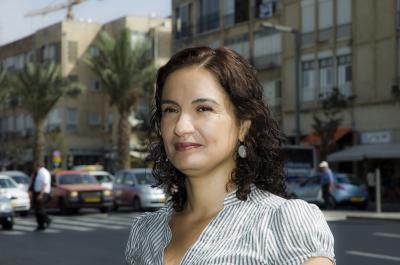Civil protests, from peaceful sit-ins at the Pentagon to violent riots in Cairo, nonetheless share some common characteristics. To study how protests evolve in public spaces, Dr. Tali Hatuka, an architect and head of Tel Aviv University's Laboratory of Contemporary Urban Design, has dissected some of the world's most publicized protests — those in Washington, Istanbul, Tel Aviv, Beijing, and Leipzig.
History shows that protests and civil disobedience are inevitable and necessary expressions of dissent in any democratic nation — and under many authoritarian regimes. From the perspective of urban planning, Dr. Hatuka's research provides insight into the tactics and strategies taken by activists and how their protests can be made more effective.
While the nature of each protest can be quite different and culture-specific, she says, there are some basic elements that can help define the social and spatial characteristics of a good protest.
Some of her recent research is reflected in her recent exhibit, "Urban Design and Civil Protest," at the Massachusetts Institute of Technology.
Get on your soapbox
Dr. Hatuka says that collective actions do not need a specially designed or designated space. When there is a collective will, protestors will find a way to bypass physical barriers, such as when protestors hijacked the city's highways in Caracas, Venezuela, in 2002. But some city planners can actually promote civil participation by addressing the role of public spaces more effectively. The arrangement of these spaces plays a significant role in mediating conflicts and injecting new ideas to society –– politically and culturally.

This is Dr. Tali Hatuka of Tel Aviv University.
(Photo Credit: AFTAU)
Dr. Hatuka recommends that urban planners create both a formal space for protests, like a civic square, and a number of informal spaces scattered throughout a city, like parks. Governments should encourage citizens to use them as a vehicle for freedom of speech, in the manner of Speakers' Corner in London's Hyde Park. All individuals should have equal access to these spaces. Scale is also important, she adds. "When Americans wish to protest, they do not immediately run to the Mall in Washington," she notes. "Sometimes a small venue will work well too."
And while Big Brother may be watching, surveillance isn't always negative, especially if it's democratically managed, Dr. Hatuka says. Surveillance serves regimes, but it can serve protestors too, warning of the onset of violence.
Violence is the most negative outcome of any protest, as recent events in Egypt prove. Its threat is a nightmare for protest organizers. "Organizers lose participants as well as the support of the spectators –– both real and virtual," Dr. Hatuka says. "However, even in non-democratic regimes, mass non-violent actions can be successful. With a sense of safety, the participants can create an imagined community and attract more participants."
Public spaces in urban areas should also be designed to be more media-friendly, so journalists and cameramen can safely access and cover protests as they unfold.
Building a space for democracy
While oppressive regimes seek to reduce access to effective protest space, a specific space for protest is a positive way to promote freedom of speech. "I am trying to demonstrate that urban planners can promote a more healthy democracy. I hope to influence and inspire urban planners of the future as well as the citizens of today," Dr. Hatuka says about her latest exhibit.
"As the recent events in Cairo suggest, a protest space doesn't have to be nice or well-designed. A large-scale protest like this has shown that people will just hijack the streets and the roads. Public spaces are the only place in which people feel truly, physically unified. With so many protests going online, the physical element is critical for enhancing society's sense of togetherness and solidarity."